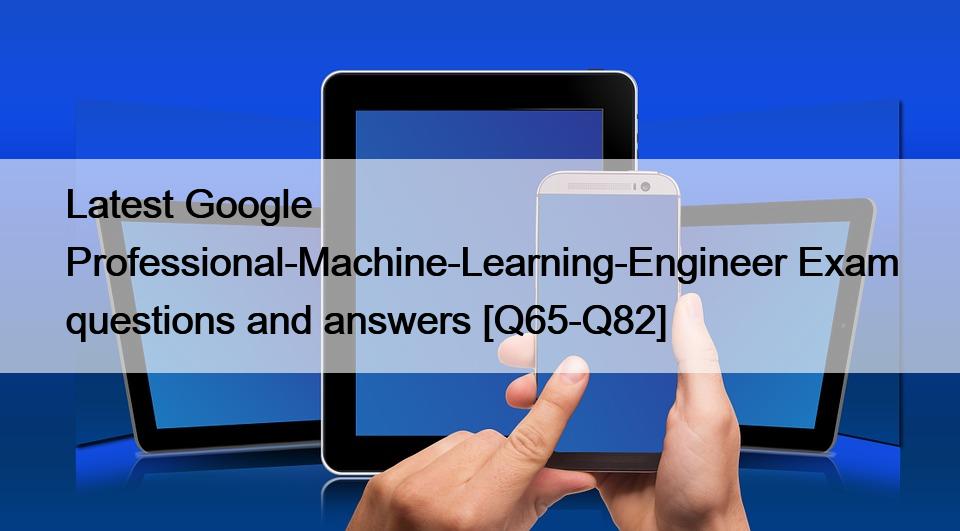
Latest Google Professional-Machine-Learning-Engineer Exam questions and answers [Q65-Q82]
Latest Google Professional-Machine-Learning-Engineer Exam questions and answers
Test4Engine Professional-Machine-Learning-Engineer Exam Practice Test Questions (Updated 142 Questions)
How much Professional Machine Learning Engineer – Google Cost
The cost of the Professional Machine Learning Engineer – Google is $200. For more information related to exam price, please visit the official website Google Website as the cost of exams may be subjected to vary county-wise.
Understanding functional and technical aspects of Professional Machine Learning Engineer – Google Data Preparation and Processing
The following will be discussed in Google Professional-Machine-Learning-Engineer exam dumps:
- Encoding structured data types
- Data exploration (EDA)
- Class imbalance
- Feature selection
- Feature crosses
- Managing large samples (TFRecords)
- Data ingestion
- Data validation
- Database migration
- Evaluation of data quality and feasibility
- Monitoring/changing deployed pipelines
- Design data pipelines
- Handling missing data
- Ingestion of various file types (e.g. Csv, json, img, parquet or databases, Hadoop/Spark)
- Streaming data (e.g. from IoT devices)
- Visualization
- Feature engineering
- Handling outliers
- Statistical fundamentals at scale
- Data leakage and augmentation
Pass Your Google Exam with Professional-Machine-Learning-Engineer Exam Dumps: https://www.test4engine.com/Professional-Machine-Learning-Engineer_exam-latest-braindumps.html





